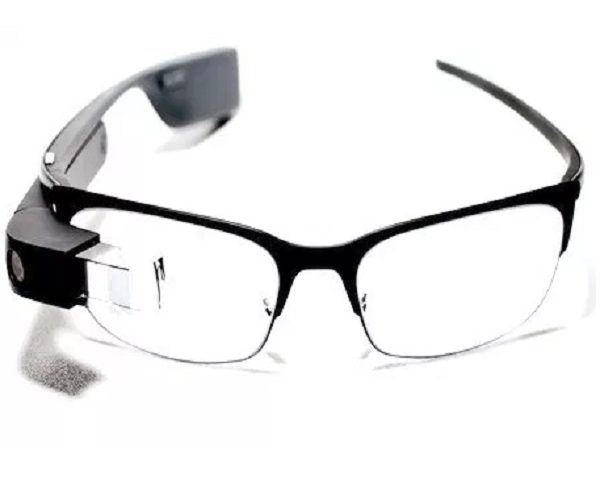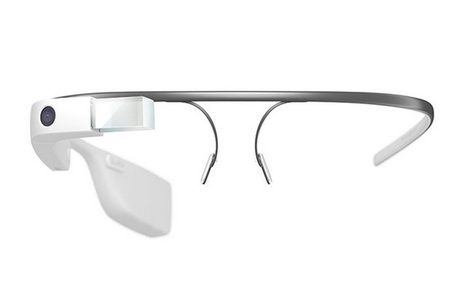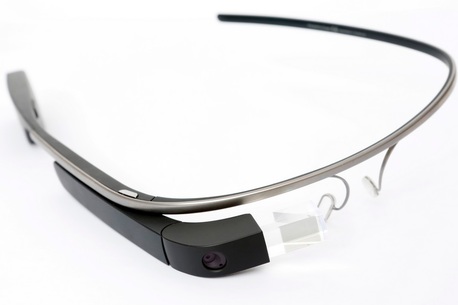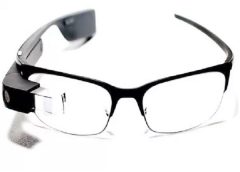
Presentation: To be honest how the Google Glass V1 came presented really depended on who you were. Some promoters and Tech YouTubers received theirs in gift bags with branded white boxing, all neat and tidy, but I also know many others simply got it in a brown box with very little in the way of padding or protection due to the lightweight nature of the headset itself. This sort of thing really proved that this HMD was never really meant for the public eye at all.
Google Glass V1 Contents
- Google Glass Unit
- USB to micro USB cable
- USB/AC plug
- Nose pads
- Glass Explorer Q&A
- X2 clip-on lenses

Description: Other than the touchpad, Google Glass can be controlled using just “voice actions”. To activate Glass, wearers tilt their heads 30° upward (which can be altered for preference) or simply tap the touchpad, and say “O.K., Glass.” Once Glass is activated, wearers can say an action, such as “Take a picture”, “Record a video”, “Hangout with [person/Google+ circle]”, “Google ‘What year was Wikipedia founded?'”, “Give me directions to the Eiffel Tower”, and “Send a message to John”. Also, search results were read back to the user, the voice response is relayed using bone conduction through a transducer that sits beside the ear, thereby rendering the sound almost inaudible to other people.
Google Glass V1 Specs…
Headset: Google Glass V1
Manufacturer: Google LLC
Launch Price: $1,500 (£1,092)
Release Date: February 2013
Headset Type: AR Smartglasses
Display: Prism projector at 640 × 360
CPU: OMAP 4430 System on a chip, dual-core processor
Field of View(FOV): 80°
Refresh Rate: 60 Hz
Interpupillary Distance Adjustment: YNo
Screen Focus Adjustment: No
Weight: 36g (1.26 oz)
Tracking: 3 DoF Non-positional

Review: In its short and highly controversial lifetime, Google Glass almost change employee policies, caught criminals and got its users sued! But despite the bad press, it got it did show people that wearable smart devices like this augmented reality system represent the next stage in mobile computing. Google Glass was a hotly-anticipated gadget because it pushed technology to the limit.
The unique optical display unit only showed things in the peripheral vision of the wearer, creating a sort of Heads-up display (HUD) it showed information beamed from a smartphone but also offer a range of other media capture services like movie and photo recording and facial recognition. But Google has now stopped making them and stopped supporting them leaving many people who own them very angry indeed.

